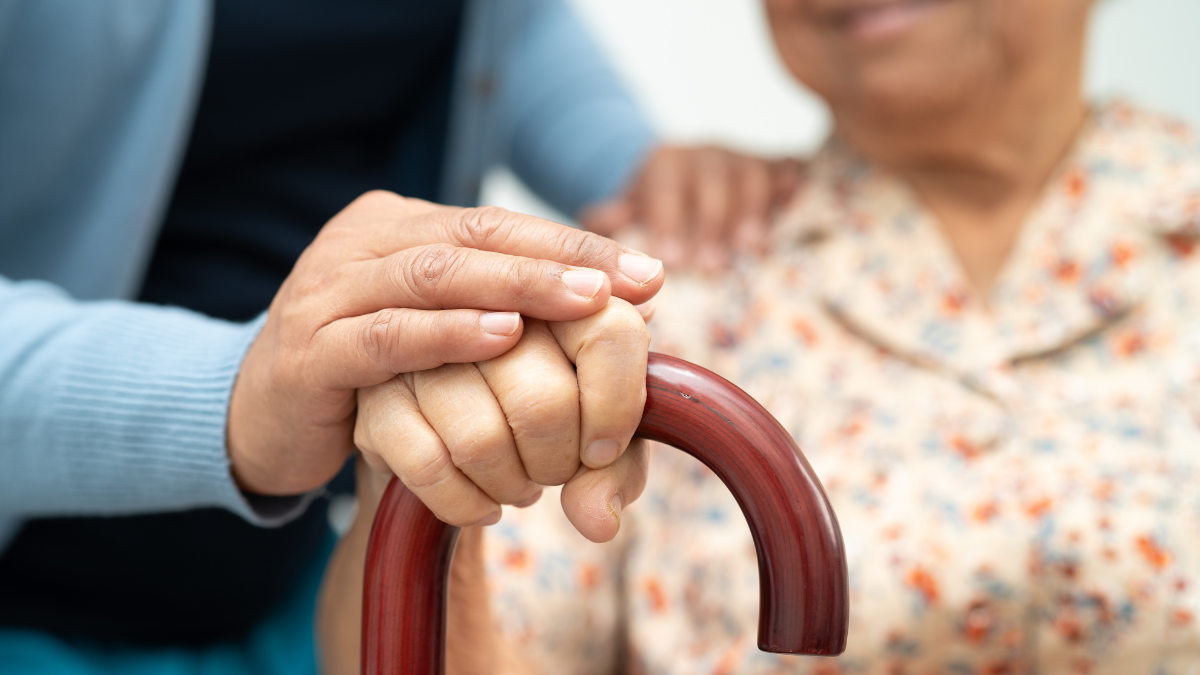
“Greetings, I'm currently working while caring for multiple family members with illness. Apologies in advance for the delay in replies.”
This was only one San Francisco-based primary care clinician’s auto-reply during the COVID-19 pandemic, but it is indicative of the challenges experienced by numerous others across the US who serve as caregivers for their loved ones outside of work. This characteristic puts these clinicians at greater risk of burnout, according to a new UCSF study.
The researchers found clinicians with more than 10 hours of caregiving responsibilities each week outside of work have a significantly greater risk of emotional exhaustion, one of the hallmarks of burnout. Published in the Journal of American Board of Family Medicine, it is the first study to demonstrate the correlation.
While the COVID-19 pandemic provided a precipitating event, the authors noted that the stressors it exacerbated were not unique to that time period, and burnout remains high among healthcare workers, particularly in primary care.
Primary care has some of the highest burnout rates among all medical specialties; it’s also where we have the greatest shortage nationally..Our findings show how efforts can be focused more precisely on a subset of clinicians who are at greater risk of burnout.
Rachel Willard-Grace, MPH
First author and associate professor at FCM
The researchers surveyed 336 primary care clinicians and staff in an urban primary care network in February 2020 and May 2021. They studied the association between gender, caregiving hours, and perceived workplace support for caregiving responsibilities on the outcome of emotional exhaustion. The researchers found that 34% of clinicians reported caregiving responsibilities of more than 10 hours per week, and that these clinicians reported significantly 25% more emotional exhaustion than those with 10 or fewer hours (0-6 scale, mean 3.9 v. 3.1).
Caregiving hours are associated with emotional exhaustion in clinicians but not staff, likely due to inadequate coverage and clinician culture
While 40% of staff surveyed reported more than 10 hours of caregiving responsibilities per week, these responsibilities weren’t associated with emotional exhaustion for staff, unlike clinicians. Previous research has highlighted a culture within medicine that stigmatizes use of leave and results in underuse. However, even when there is a supportive culture for taking leave, challenges remain. Based on report-back sessions with clinicians and staff, clinicians describe an experience of work accumulating when they are absent, rather than being covered by other people. Thus, a culture of support for taking time off may be less meaningful to clinicians than the pure volume of work awaiting them when they return. Inadequate coverage of clinician tasks during leave such as responding to patient portal inbox messages may diminish the benefits of supportive policies and culture.
“In addition to promoting family-friendly policies such as paid time off and family medical leave, flexible hours and the ability to work remotely, and support for dependent care, it may be important that health systems examine the pure volume of work and establish backup systems to ensure that there is coverage for clinicians during periods of leave so that they can effectively unplug,” said Kevin Grumbach, MD, Professor, UCSF FCM and Founding Director of CEPC.

Women are more likely to be caregivers with greater caregiving responsibilities, less support, and higher levels of burnout
In the study, female clinicians were twice as likely than male clinicians to report more than 20 hours of caregiving per week (29.7% v. 14%). In addition, female clinicians reported 29% greater emotional exhaustion than male clinicians (0-6 scale, mean 3.54 v. 2.74).
These results add to the literature on gender-based differences in job responsibilities, caregiving responsibilities, and resulting stressors, particularly for clinicians. Female clinicians receive more requests from patients and staff, spend more time on electronic in-basket work, and provide more preventive care for their patients than male physicians. Female clinicians with caregiving responsibilities also have less support for caregiving than male colleagues.
These gender-based differences are echoed throughout science, technology, engineering, mathematics, and medicine (STEMM) careers. They contribute to the national trend of fewer women advancing and succeeding in these fields, according to a recent National Academies of Sciences, Engineering, and Medicine (NASEM) report.
The findings of this study highlight the unique stressors on healthcare workers of all genders who have significant informal caregiving responsibilities outside of work. This group constitutes a growing proportion of the working population of the U.S. Creating appropriate support for this group can help to sustain a vital section of the U.S. workforce.
The authors called for institutional reforms, innovative practices, and comprehensive legal support for those in STEMM who have family caregiving responsibilities.
For resources and training on addressing clinician burnout, visit cepc.ucsf.edu.




